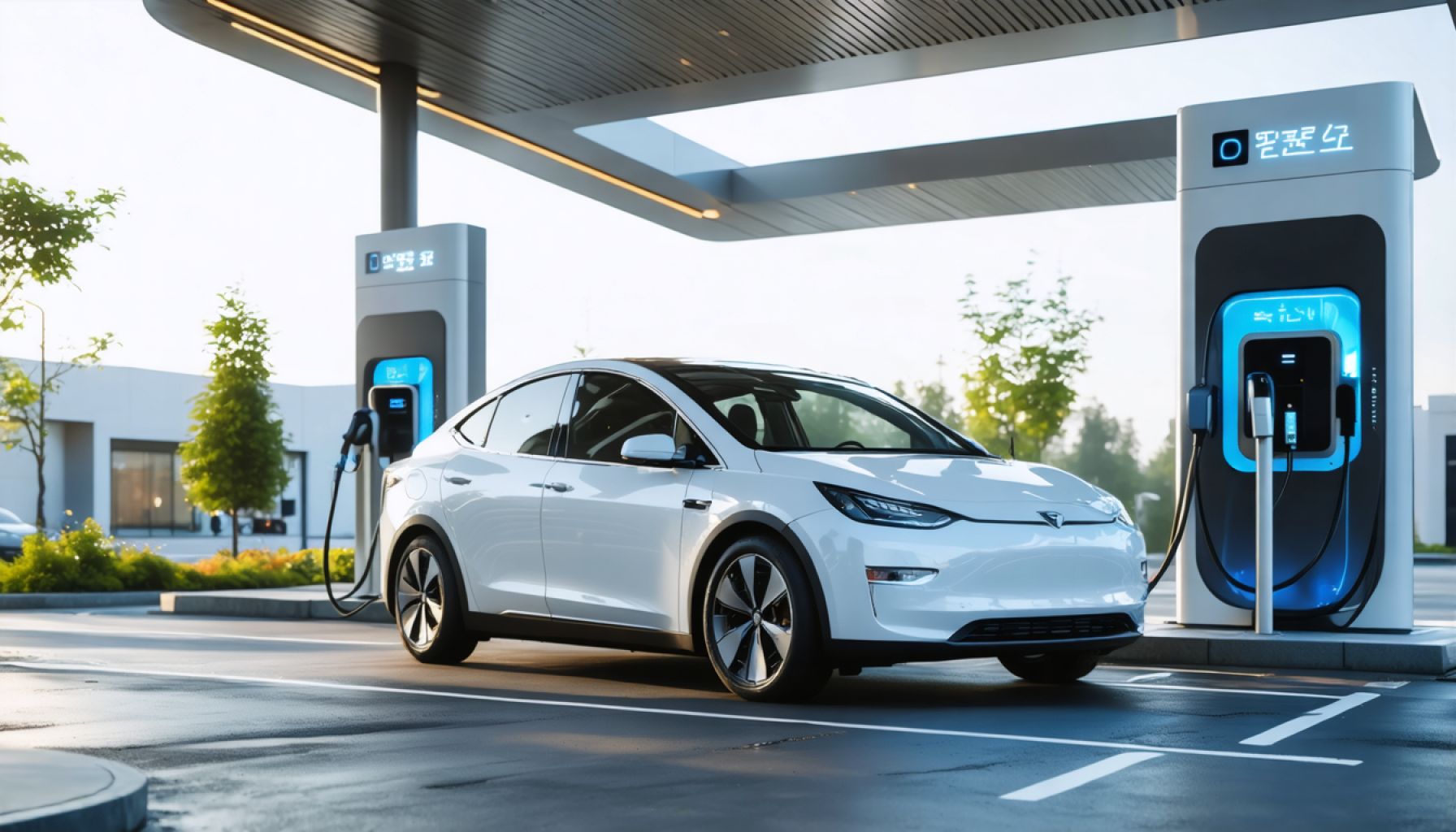- U.S. electric vehicle (EV) charging infrastructure expanded significantly, with a 50% increase in public charging connectors.
- EV sales in the U.S. rose by 10%, reflecting growing consumer adoption.
- During high travel periods like Thanksgiving, charging stations handled a 50% rise in demand, reducing concerns over availability.
- Average use of charging connectors decreased from 24% to 22%, indicating better access and reduced waiting times.
- Health benefits include a 3.2% decline in asthma-related emergencies for every twenty EVs per 1,000 people.
- The San Francisco Bay Area saw a consistent annual 1.8% reduction in toxic gases over a decade due to increased EV adoption.
- Financial incentives include potential annual savings of up to $1,500 on fossil fuel costs for EV drivers.
- The transition to EVs promises a cleaner, healthier future with substantial environmental and economic advantages.
The roar of engines may soon be replaced by the gentle hum of electric motors, as the U.S. makes significant strides in expanding its electric vehicle (EV) charging infrastructure. This year, the highways and byways felt the electric surge, with public charging connectors skyrocketing by 50% compared to last year. The ramp-up comes just in time for the increasing number of EVs cruising American roads, with sales up by 10%.
Imagine a bustling Thanksgiving week—the ultimate stress test for travel infrastructure. Charging stations, like green lifelines, kept pace brilliantly with a 50% spike in demand. The drop in the average use of each connector from 24% to 22% suggests that worries over available charging points might soon be a thing of the past.
But the benefits go beyond convenience. In an unexpected twist, health studies reveal potential silver linings to this electrifying shift. A study from the University of Southern California suggests that with every twenty EVs added per thousand people, asthma-related emergencies dip by 3.2%. In the San Francisco Bay Area, sensors recorded a 1.8% annual reduction in toxic gases over a decade—small victories with vast implications.
The once-daunting barrier of charging availability is crumbling, removing a significant hurdle for potential EV buyers. With fossil fuel expenses evaporating, drivers could save up to $1,500 annually. Add environmental and health perks, and the case for going electric grows compellingly clear. As the road ahead looks brighter, transitioning to EVs no longer seems just a dream but a tangible, healthier future.
Why Electric Vehicles Are Transforming the Future of Driving
How-To Steps & Life Hacks for EV Owners
1. Plan Your Charging Stops: Use apps like PlugShare or ChargePoint to locate and check the availability of nearby charging stations.
2. Maximize Battery Life: Avoid depleting your EV battery completely. For optimal battery health, maintain a charge between 20% and 80%.
3. Government Incentives: Check for federal, state, or local incentives for purchasing an EV, which may include tax credits and rebates.
4. Home Charging Tips: Invest in a Level 2 home charger for faster charging times. Ensure your electrical setup can handle the load by consulting with an electrician.
Real-World Use Cases
– Ride-Sharing Services: Companies like Uber and Lyft are increasingly adopting EVs to reduce emissions and benefit from lower operational costs.
– Last-Mile Delivery: Businesses are competitive in the logistics industry by transitioning to EVs, reducing carbon footprints and fuel costs.
Market Forecasts & Industry Trends
According to a report by BloombergNEF, electric vehicles are projected to account for 58% of global passenger vehicle sales by 2040. The U.S. is ramping up its infrastructure to keep pace with this growth, with federal plans supporting the deployment of 500,000 charging stations nationwide by 2030.
Reviews & Comparisons
– Tesla Model 3: Known for its impressive range and performance, the Model 3 remains a top choice among consumers.
– Chevrolet Bolt: Offers affordability and decent range, appealing to budget-conscious buyers.
– Ford Mustang Mach-E: Combines iconic styling with electric efficiency, catering to both performance enthusiasts and environmentalists.
Controversies & Limitations
– Charging Infrastructure: While expanding rapidly, rural areas still face limited charging options, which poses challenges for long-distance travel.
– Battery Production: Environmental concerns exist regarding the mining and production of lithium and cobalt used in batteries.
Features, Specs & Pricing
– Range: EV ranges have increased substantially, with most modern EVs offering over 250 miles per charge.
– Price: Prices have varied, with new EVs starting around $30,000 but some high-end models exceeding $100,000.
Security & Sustainability
– Battery Recycling: Companies like Tesla and Nissan are exploring recycling methods to mitigate environmental impacts.
– Cybersecurity: As vehicles become more connected, cybersecurity remains a critical focus to protect against data breaches.
Insights & Predictions
Industry experts predict that by 2035, most automotive companies will offer primarily electric lineups, driven by stricter emissions regulations and consumer demand for eco-friendly options.
Tutorials & Compatibility
– App Integration: Most new EVs come with built-in software that syncs with smartphones, enabling remote control and monitoring.
– Compatibility: Ensure your charging station is compatible with your vehicle’s connector type. Most U.S. public stations support the CCS or CHAdeMO standards.
Pros & Cons Overview
Pros:
– Lower operating costs
– Environmental benefits
– Enhanced driving experience due to instant torque
Cons:
– Initial purchase price can be higher
– Charging infrastructure in remote areas still developing
– Battery production raises environmental and ethical concerns
Actionable Recommendations
– Test Drive: Before buying, take an EV for a spin to understand its benefits firsthand.
– Get Informed: Stay updated on government incentives and infrastructure developments.
– Community Engagement: Join local EV owner groups to exchange tips and support.
For further exploration of electric vehicles and industry trends, visit the Bloomberg website.














